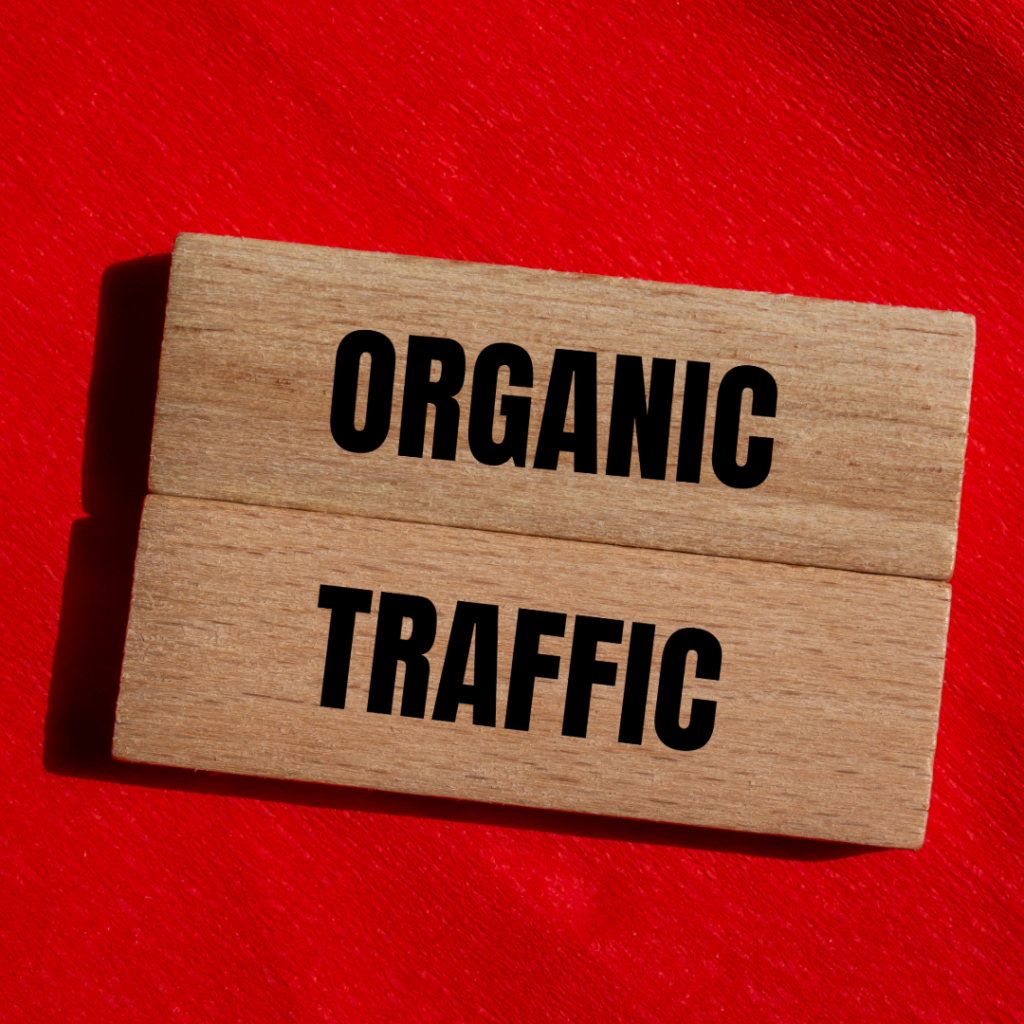Understanding Organic Traffic
Organic traffic is the lifeblood of online visibility, influencing not just sales but also customer engagement and brand authority. Organic traffic refers to visitors who find your website through unpaid search results on search engines like Google and Bing. Unlike paid ads that require ongoing investment, organic traffic is earned through effective search engine optimization (SEO) and high-quality content. Historically, many businesses have solely relied on referrals and repeat business. With search becoming such a prominent way to find things and more competition than ever, SEO becomes something that needs attention.
Why is organic traffic so important? For starters, it supports long-term growth by building a sustainable flow of visitors who are genuinely interested in what you offer. Moreover, ranking high in organic search results enhances your brand’s credibility and increases the likelihood of clicks on both organic and paid ads.
Insights. Ideas. In Your Inbox
Keyword research and content optimization are key for boosting your organic search rankings and attracting relevant visitors.
What is Organic Traffic?
Organic traffic includes visitors who reach your site via unpaid search engine results. These visitors find your site without any paid promotion and you don’t pay anything to acquire them. This means they found your site naturally, without the influence of paid advertisements. Organic traffic is generated through effective SEO practices, where search engine crawlers index your content and display it in search results based on its relevance and quality.
Unlike paid traffic, which comes from pay-per-click (PPC) ads, organic traffic is sustainable and cost-effective. It involves an initial investment in SEO efforts, but once your content is well-optimized, it can continue to drive traffic without additional costs. This makes organic traffic a valuable asset for any business looking to increase its online presence and attract more visitors.
Benefits of Organic Traffic
One of the main advantages of organic traffic is its cost-effectiveness. Unlike paid advertising, which requires a continuous financial investment, organic traffic relies on the initial SEO and continued content creation efforts. This makes it a sustainable way to drive traffic to your website over the long term. One piece of optimized content can rank well for many years. Moreover, organic traffic helps build trust and authority, as users tend to trust organic search results more than paid ads.
High-quality content that ranks well in organic search results can attract a consistent flow of visitors, leading to increased engagement and higher conversion rates. Additionally, organic traffic supports your SEO strategy by providing valuable backlinks and referral traffic, further enhancing your site’s visibility and search engine rankings.
Measuring Your Organic Traffic
Measuring your organic traffic is crucial for understanding the effectiveness of your SEO strategies and making necessary adjustments. Tracking organic traffic helps identify successful tactics and areas needing improvement. Consistent measurement allows you to refine your SEO efforts and improve overall site performance, ensuring that you are driving relevant traffic to your site.
Two essential (and free) tools for measuring organic traffic performance are Google Analytics and Google Search Console. These platforms provide valuable insights into your site’s performance, helping you track key metrics and monitor your SEO efforts. These tools provide a comprehensive view of your organic traffic, enabling data-driven decisions to enhance your SEO strategy.
Using Google Analytics
Google Analytics (GA4) is an excellent tool for tracking web traffic. It is one of the best free options for measuring organic traffic. It allows you to track key metrics related to organic traffic, including sessions, user behavior, and conversion rates. Analyzing these metrics reveals how effectively your SEO efforts convert visitors into subscribers, leads, and customers.
Using Google Analytics in conjunction with Google Search Console provides the most comprehensive view of your organic traffic performance. For WordPress users, tools like MonsterInsights can simplify the process of tracking conversions and make Google Analytics easier to use.
Regularly monitoring these metrics helps identify areas for improvement and optimize your SEO strategy.

Utilizing Google Search Console
Google Search Console is another free tool from Google that helps you monitor technical SEO issues and track organic rankings and traffic. It provides valuable insights into how your site is performing in Google search results, showing total organic clicks, traffic sources, and the impact of your SEO efforts on website traffic.
Google Search Console allows you to track your organic rankings and pinpoint search queries driving traffic to your site. This tool is essential for effectively monitoring site performance and making data-driven adjustments to your SEO strategy.
Regularly reviewing Search Console data helps you stay on top of technical issues and optimize your site’s visibility in search results.
Keyword Research and Optimization
Keyword research is a primary tactic to increase organic traffic, as it helps you identify relevant keywords that your target audience is searching for. Optimizing content for relevant keywords improves search engine rankings and attracts more organic traffic. Effective keyword research and on-page optimization are crucial components of a successful SEO strategy.
On-page optimization involves strategically placing keywords in key areas such as titles, headers, meta descriptions, and body text to enhance visibility and drive organic search traffic. Focusing on keyword targeting and site quality boosts organic search rankings and attracts more relevant traffic.
Conducting Keyword Research
To conduct effective keyword research, tools like Ahrefs, Semrush, and Google’s Keyword Planner are essential for checking traffic and competition for keywords. These tools help you identify relevant search terms with high search volume and low competition, maximizing your chances for ranking success. Regular keyword analysis is necessary to keep your content relevant and leverage emerging trends.
Understanding the keywords your competitors are targeting can provide strategic insights for your own SEO efforts. Tools like Semrush can compare keyword profiles of competing domains, helping you target the most qualified audience effectively.
Additionally, long-tail keywords, which are more specific in nature, tend to have lower competition and are often easier to rank for compared to broader terms.
On-Page Optimization
On-page optimization involves placing primary keywords in key areas such as titles, headers, and meta descriptions to improve SEO performance. Including keywords early in page titles and headlines enhances visibility and attracts clicks from search engine results. A strong headline structure using relevant H1 and subheadings (H2, H3, H4) creates a clear information hierarchy for search engines.
Meta descriptions should contain important keywords and effectively summarize the page content to provide a value proposition. Incorporating secondary keywords throughout the content helps capture additional traffic and supports the main meta description.
Focusing on these on-page SEO elements significantly boosts organic search rankings and drives more traffic.
Creating High-Quality Content
Creating high-quality, relevant content that meets user intent is crucial for increasing organic traffic. Well-written content that answers common questions and provides valuable information tends to generate more shares, return visits, and higher engagement. Integrating videos, optimizing title tags, and using descriptive ALT text enhance user experience and search result visibility.
High-quality content also helps establish your site’s authority and credibility, which are essential for attracting valuable backlinks and improving search engine rankings. Regularly updating and optimizing your content ensures it remains relevant and continues to drive organic traffic over time.

Writing for User Intent
Understanding the user intent behind search queries is crucial for creating targeted content that meets audience needs. By focusing on what users are looking for and providing clear, accurate information, you can boost engagement and click-through rates. Writing for humans first and considering what will prompt users to click on your content is essential for driving organic web traffic.
Content plays a crucial role for SEO more broadly but for local SEO as well when you are competing for business with other competitors in close proximity to your own business. For example, if you are a lawyer in Los Angeles that focuses on immigration cases, you will want to develop content that is closely related to what potential clients might need. This might include help with a Visa or deportation advice. If you don’t have quality content the lawyer down the road does you will not appear as often or in the places that matter most.
Effective internal linking can guide users to related content, increasing their engagement and time spent on your site. By answering common questions and addressing specific user needs, you can create content that resonates with your audience and encourages return visits.
Regular Content Updates
Regularly updating your content is crucial for maintaining its relevance and improving SEO performance. Google favors recent information in its rankings, so refreshing old content can significantly boost your chances of attracting consistent organic traffic. Conducting content audits helps identify outdated posts that require updates and re-optimization.
Before updating old posts, it’s important to conduct keyword research to ensure relevancy and leverage emerging trends. Republishing updated content with a new date can reinvigorate its performance and attract more traffic.
Regularly updating key articles helps maintain high search rankings and drive more organic traffic.
Technical SEO Best Practices
Technical SEO focuses on improving the backend aspects of a website. This optimization aims to boost the site’s performance in search engine results. This includes ensuring that search engines can discover, crawl, and index your content effectively. Key technical SEO practices include optimizing site speed, ensuring mobile-friendliness, and implementing structured data and schema markup.
Addressing technical SEO issues improves site health and boosts organic traffic performance. Tools like Semrush’s Site Audit can help identify and resolve technical issues, ensuring your site is optimized for search engines and user experience.
Site Speed Optimization
Site speed is a critical ranking factor, as slow-loading pages can negatively impact user experience and SEO performance. Google’s Core Web Vitals report provides insights into your site’s speed and performance, which you can find under the Core Web Vitals tab in Google Search Console. To improve your site’s speed, consider optimizing images, minimizing code, and leveraging browser caching.
If your Core Web Vitals report indicates poor performance, it’s essential to find ways to enhance your site’s speed. Managing low-performing pages by deleting or redirecting them can also help improve overall site speed. Focusing on site speed optimization enhances user experience, boosts organic traffic, and improves search rankings.
Mobile-Friendly Design
In today’s mobile-first world, having a mobile-friendly design is crucial for SEO success. Google announced mobile-friendliness as a ranking factor in 2015, making it essential for websites to be optimized for mobile devices. A mobile-friendly site should be fast, easy to navigate, and fully crawlable by search engines.
Google Analytics can provide insights into mobile site performance by detailing user behavior based on operating system, browser, and screen resolution. Ensuring your site performs well on mobile devices will not only improve user experience but also boost your organic search rankings and drive more organic traffic to your site.
Structured Data and Schema Markup
Implementing structured data and schema markup helps search engines better understand the content on your web pages. This standardized format for providing information about a webpage can improve your chances of being featured as a snippet in search results. Using tools like Google’s Structured Data Markup Helper can simplify the process of adding structured data to your site.
Schema markup enhances the visibility of your content by providing search engines with additional context about your web pages. Implementing structured data improves search engine rankings and attracts more organic traffic.
Building Internal and External Links
Building both internal and external links is a crucial aspect of SEO that can significantly improve your organic rankings. Internal links help distribute link authority across your site and improve user engagement, while external links (backlinks) from reputable sites signal trustworthiness to search engines. A robust link-building strategy boosts site authority and drives more organic traffic.
Effective link-building involves acquiring valuable backlinks from authoritative sites and creating an internal linking structure that enhances user experience and SEO performance. Tools like Semrush’s Link Building Tool can help identify new link-building opportunities.
Internal Linking Strategy
Internal linking is vital for building topical authority, distributing link equity, and improving user engagement on your site. Using anchor text effectively and avoiding exact match keyword overuse creates a natural, user-friendly linking structure. Tools like the Link Assistant inside AIOSEO Pro can assist in building internal links effectively.
Tracking the performance of internal links using GA4 User Behavior reports can provide insights into how users navigate your site. Consolidating similar content into one strong page can improve keyword rankings and attract more valuable backlinks.
Acquiring Quality Backlinks
Acquiring quality backlinks is essential for enhancing your site’s authority and credibility. Backlinks from high-authority sites can significantly improve your search rankings and drive more organic traffic. Tools Semrush’s Link Building Tool can help automate the process of finding and acquiring valuable backlinks.
Creating relevant, high-quality content that resonates with your audience is a key method for earning backlinks. Additionally, original research and industry-related content can attract links from websites seeking to reference your findings. Consistently publishing valuable content and reaching out to relevant sites builds a strong backlink profile and boosts organic traffic.
Leveraging Social Media and Other Channels
Leveraging social media and other channels is an effective way to drive more organic traffic to your site. Social media platforms can help you reach a large audience organically or through paid promotion. Customizing content for each platform and engaging with your audience can enhance traffic and engagement.
Sharing blog posts with your email subscribers and reminding them about new content can also drive traffic and keep your audience engaged. By integrating social media and email marketing into your SEO strategy, you can amplify your reach and drive more relevant traffic to your site.
Sharing Content on Social Media
Sharing content on social media platforms can drive followers to your website and attract new traffic through shares. Using industry-relevant hashtags can improve visibility and reach a broader audience. Including strong calls-to-action in your social media posts can effectively direct users to your website and encourage engagement.
Customizing content for each platform enhances engagement and ensures your message resonates with your audience. Consistently sharing high-quality content on social media boosts organic traffic and improves SEO performance.
Guest Blogging and Partnerships
Guest blogging and forming partnerships with other sites can significantly enhance your SEO efforts. High-quality backlinks from authoritative sites improve your search engine ranking and credibility. When targeting sites for guest posting, choose those with a similar audience and good domain authority to maximize the impact of your efforts.
Guest blogging allows you to tap into the audiences of featured sites and drive traffic to your own site. Collaborating with influencers and building relationships with bloggers in your niche can amplify the reach of your guest posts and attract new audiences.
Consistently engaging in guest blogging and forming strategic partnerships builds a strong backlink profile and drives more organic traffic.
Monitoring and Analyzing Performance
Monitoring and analyzing your SEO performance is crucial for understanding the effectiveness of your strategies and making necessary adjustments. Regular evaluation helps identify areas for improvement and refine your tactics to ensure continuous growth. Tools like Google Analytics and Google Search Console provide valuable insights into your site’s performance and user behavior.
Consistently observing your SEO campaigns helps identify successes and issues, enabling data-driven decisions and optimization. Regular analysis of key performance indicators such as bounce rate, click-through rate, and average position can help you stay on top of your SEO game and drive more organic traffic.

Tracking SEO Metrics
Tracking key SEO metrics is essential for evaluating the success of your strategies and making informed decisions. Google Search Console provides insights into total impressions, total clicks, and average clickthrough rate, helping you understand how well your content is performing in search results. Google Analytics offers detailed user behavior insights that can help improve conversion rates and user engagement.
Setting up custom alerts in Google Analytics can help you monitor significant shifts in traffic and take timely action. Regularly tracking these metrics helps identify areas for improvement and optimize your SEO strategy to drive more organic traffic.
Adjusting Strategies Based on Data
Making data-driven adjustments to your SEO strategy can significantly enhance its effectiveness. Analyzing user behavior metrics allows you to make informed changes to your website content and design, improving user experience and engagement. Continuous analysis of SEO data ensures your strategies remain effective in changing market conditions.
Using performance metrics to guide your SEO efforts allows you to make data-driven decisions and optimize your tactics for better results. Regularly reviewing and adjusting your SEO strategy based on data ensures continuous growth and drives more organic traffic.
Summary
In summary, increasing organic traffic involves a combination of effective keyword research, high-quality content creation, technical SEO best practices, and strategic link-building. By understanding the importance of organic traffic and implementing these proven techniques, you can build a sustainable flow of visitors and improve your site’s visibility and credibility.
Remember, SEO is an ongoing process that requires continuous monitoring and adjustments. By consistently refining your strategies and staying up-to-date with the latest trends and best practices, you can achieve long-term success and drive more organic traffic to your site. Keep pushing forward, and the results will follow.
Frequently Asked Questions
What is organic traffic?
Organic traffic is the valuable stream of visitors finding your website through free search engine results, not through paid ads. Embrace this opportunity to grow your audience authentically!
Why is organic traffic important?
Organic traffic is crucial because it is cost-effective and fosters trust and authority, leading to sustained growth. Embrace it to ensure a steady influx of relevant visitors!
How can I measure my organic traffic?
To effectively measure your organic traffic, utilize tools like Google Analytics and Google Search Console for valuable insights on your site’s performance and user engagement. Take charge of your data and watch your growth soar!
What are some effective keyword research tools?
To excel in keyword research, utilize powerful tools like Ahrefs, Semrush, and Google’s Keyword Planner to discover high-volume, low-competition keywords that can enhance your content strategy!
How can I improve my site’s technical SEO?
To boost your site’s technical SEO, focus on enhancing site speed, ensuring it’s mobile-friendly, and using structured data with schema markup. These steps will significantly improve your visibility in search results!

